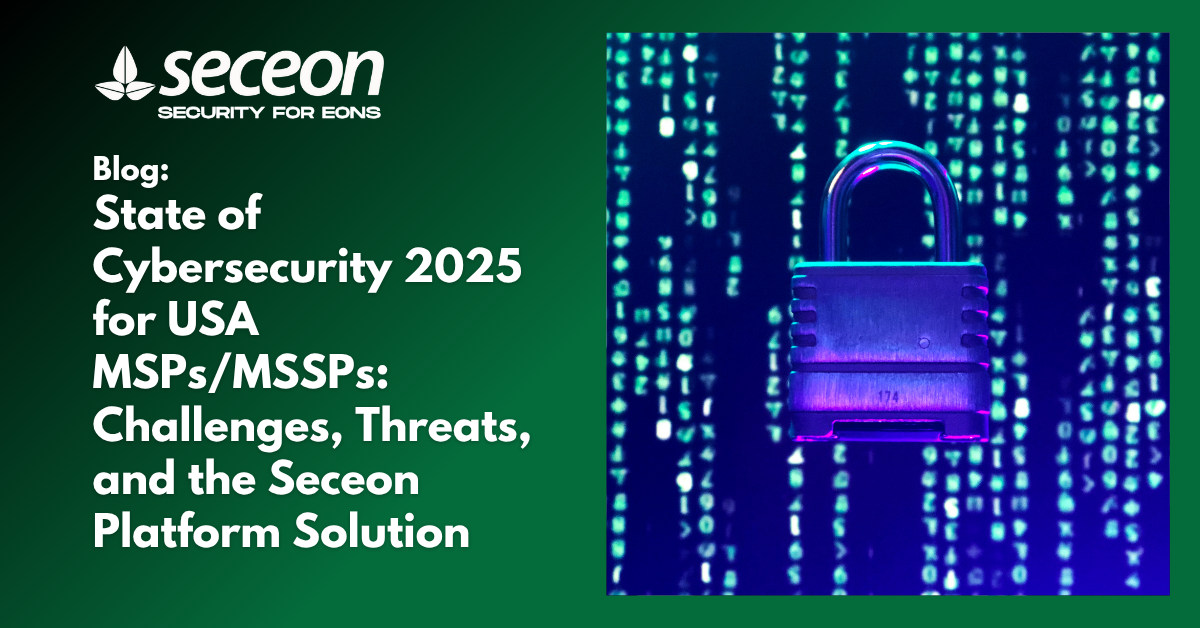
The landscape of cybersecurity for USA Managed Service Providers (MSPs) and Managed Security Service Providers (MSSPs) in 2025 is defined by unprecedented complexity, operational frustration, and rapidly escalating threats. The “Best of Breed” tool stack, the evolution of nation-state APT groups, and the explosion in ransomware require a fundamental rethinking of how cybersecurity is delivered and managed.
Key Theme:
Seceon, a 100% partner-only company that never competes with its partners, stands apart with a platform designed specifically to relieve these pain points and unify security for its global network of providers and clients.
The cybersecurity stack used by MSPs and MSSPs has become too complex, too fragmented, and too slow to keep up with modern threats. This has created a multi-layered crisis:
MSPs typically manage 8-15 separate security tools per client. Each tool requires individual configuration, monitoring, and maintenance. As a result, operations become inconsistent, teams are overburdened, and visibility becomes deeply fragmented.
A staggering 73% of security initiatives fail to achieve their intended improvements. This failure is usually due to misalignment between tools, integration breakdowns, and overwhelming operational overhead.
Despite major ransomware takedowns globally, attacks increased by 11% in 2024, reaching 5,414 incidents. Criminal groups are becoming more resilient and more aggressive.
Nation-state actors stole over $2.1B in cryptocurrency, targeting critical infrastructure and supply chains. Attackers are using new techniques to bypass traditional security controls.
Complex tool stacks commonly result in 40% cost overruns and 18+ month implementation timelines, making it nearly impossible for MSPs to scale efficiently.
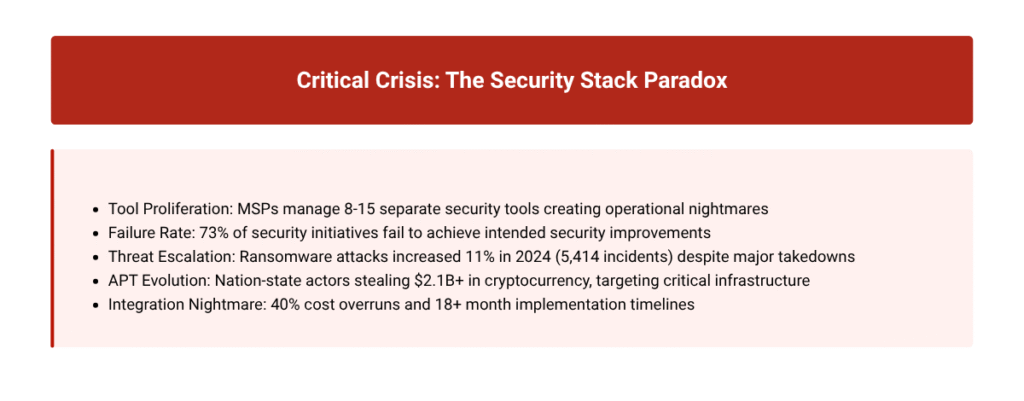
This section highlights the measurable impact of multi-tool environments, reinforcing why MSPs/MSSPs can no longer depend on scattered solutions.
These statistics show the collapse of the best-of-breed model – the complexity of multiple disconnected tools now outweighs the benefits they once promised.
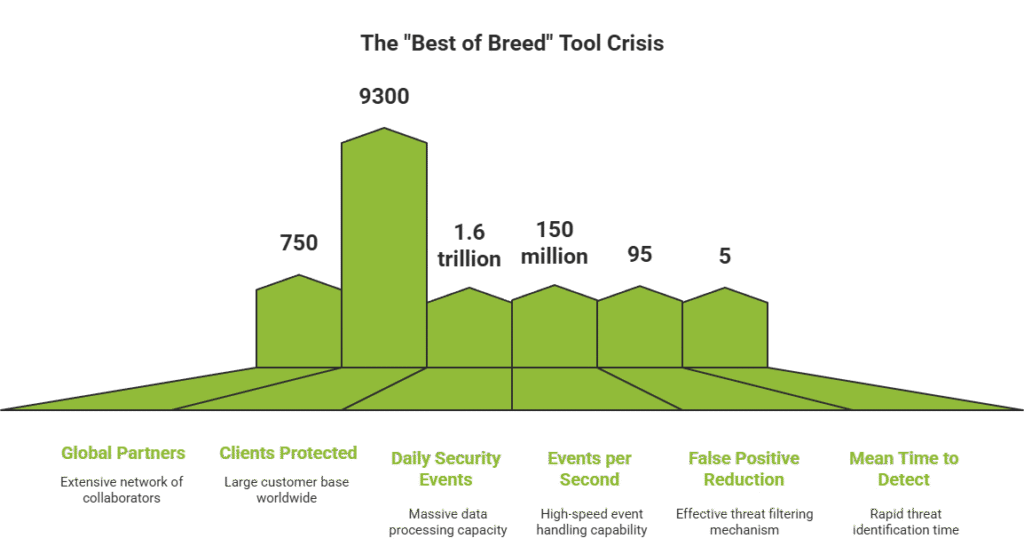
Ransomware remains the dominant threat, with 5,414 global attacks reported in 2024.
Even after high-profile takedowns, activity grew by 11%, proving that attackers are reorganizing faster than ever.
The most active ransomware group of early 2025, with an 80% activity increase.
They target healthcare, manufacturing, and business sectors, often exploiting zero-day vulnerabilities. Qilin is known for multi-platform payloads and rapid deployment.
Responsible for $50M+ in ransom payments, Akira uses double-extortion, multi-platform malware, and Rust-based variants.
They target former Conti affiliates, SMBs, and enterprises — averaging 130 victims per quarter.
A highly active group known for partnering with North Korean APT actors.
They run multi-platform campaigns and leverage custom ransomware variants.
Previously one of the most active groups with 531 attacks in 2024, RansomHub disbanded in April 2025. Most of its affiliates migrated to Qilin, increasing Qilin’s activity.
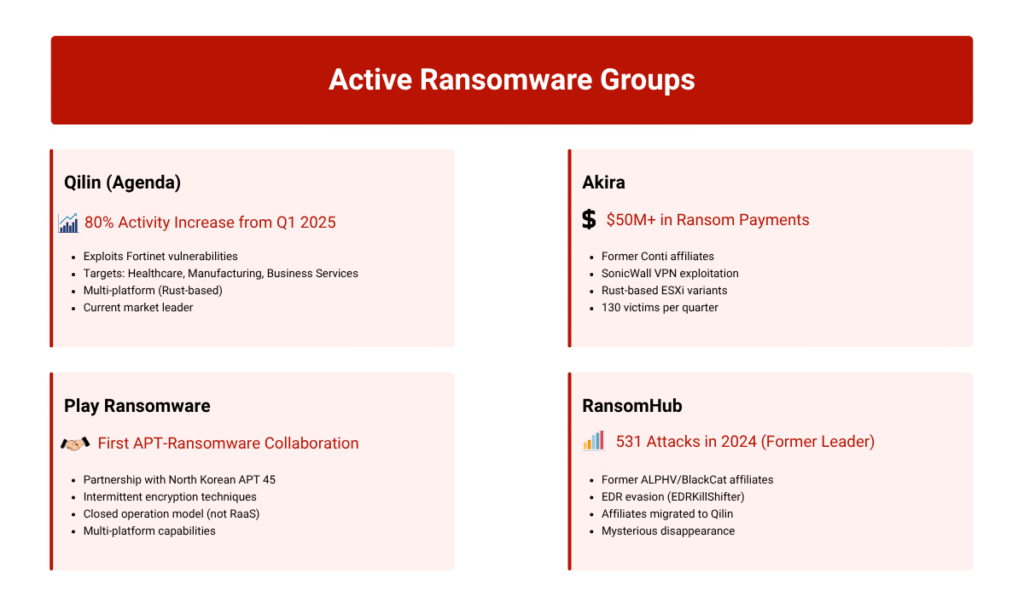
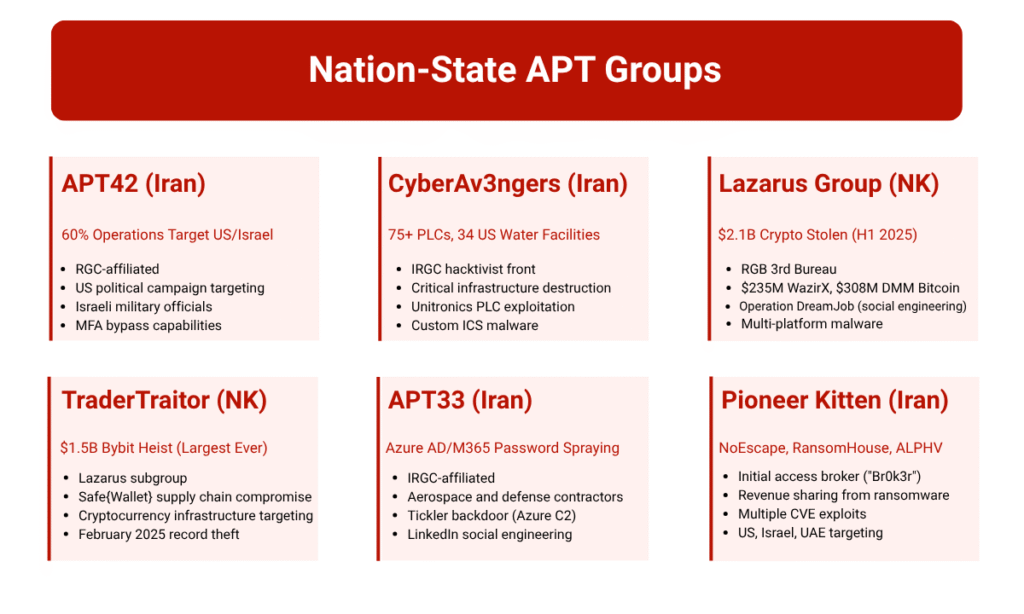
Seceon answers these challenges with robust, comprehensive features all in a single, AI-powered architecture, including:
Key Unified Capabilities:
Head-to-Head: Traditional Multi-Tool vs Seceon Unified


This organization previously managed 11 tools with a 5-person team. After consolidation, one analyst replaced the entire team. Compliance reporting dropped from two weeks to two hours, and total cost fell by 47%.
Managing 15 tools became impossible.
After consolidation:
With 47 tools and 73-day configuration cycles, this enterprise was struggling.
Post-consolidation, security operations became unified across AWS, Azure, and GCP, alert delays dropped from 18 hours to seconds, and visibility became complete.
MSPs/MSSPs can no longer rely on scattered solutions. With threats escalating and costs rising, the industry requires consolidation.
A unified platform provides:
The Question Is Not Whether to Consolidate – But How Quickly You Can Begin the Transition
The real question today isn’t whether MSPs and MSSPs should consolidate their security tools – that’s already clear. The real challenge is how quickly they can begin the transition. Every day spent on a scattered, multi-tool stack increases risk, cost, and complexity, while a unified platform immediately improves detection, reduces workload, and strengthens protection. The faster the transition begins, the faster the organization becomes secure, efficient, and future-ready.
